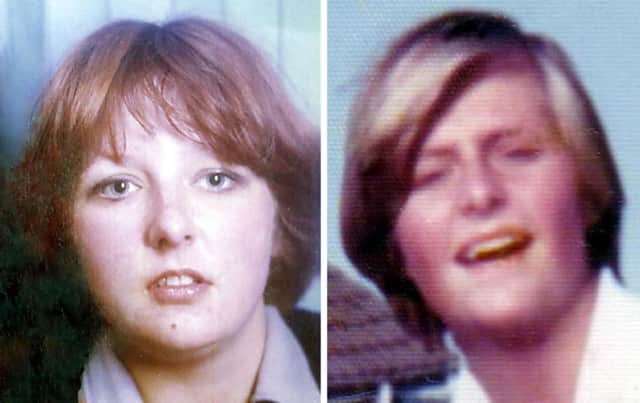World’s End murder jury shown ‘distressing’ photos


Helen Scott and Christine Eadie, both 17, were last seen at the World’s End pub in Edinburgh’s Royal Mile before their bodies were found in East Lothian.
At the High Court in Livingston, members of the jury were shown photographs of the two women which had been taken before post-mortem examinations were carried out at a mortuary in Edinburgh.
Advertisement
Hide AdAdvertisement
Hide AdLord Advocate Frank Mulholland, who is prosecuting the case, said the images were “distressing” and should not be shown on screens in the court due to members of the women’s families being in attendance.
Asking witness Kenneth Fairley, 56, a former photographer with Lothian and Borders Police, to look at the pictures, Mr Mulholland described the first, showing injuries to Christine’s left arm.
Nine photographs were shown to the jury, detailing injuries to both Christine and Helen.
In one, the Lord Advocate said Christine’s head could be seen, with her mouth open. A gag and ligature which had been found on the body had been removed and injuries could be seen to the neck, the top of the body, the face and head.
Later, another group of photographs were shown.
Mr Mulholland said: “I don’t want these on screen. These are distressing and upsetting.”
One of the photographs was said to show the body of Helen in a field, which was referred to as the “deposition site”.
In another picture, taken by police scene-of-crime officers, the body of Helen was said to be shown lying in the field with her hands tied behind her back. She was wearing a raincoat and there was a pair of pants to the left side of her head.
Another photograph, which was seen by the jury but not shown in open court, showed the body of Christine on Gosford beach with a ligature around her neck.
Advertisement
Hide AdAdvertisement
Hide AdThe court was also shown a series of photos from the inside of the World’s End pub, which were taken following the girls’ disappearance in 1977, as well as photos taken by police in 2004 showing parts of the A198 road, which runs alongside Gosford bay.
Photographs of ligatures that were removed from the two women were also shown. These were taken in a laboratory in 2005.
In one, hair could seen entangled on a pink bra which had been used as a ligature on Christine’s neck.
In another, a shopping list which was found on a piece of paper in Helen’s coat could be seen.
Angus Sinclair, 69, is charged with assaulting, raping and murdering Christine and Helen, while acting with his brother-in-law Gordon Hamilton, who is now dead.
He is also charged with attempting to pervert the course of justice by stealing items of clothing and personal effects from the teenagers.
Sinclair denies the charges and has lodged a defence claiming the women consented to have sex with him and that
he had been fishing on the banks of the Firth of Forth at Cockenzie power station when they were assaulted and murdered.
Advertisement
Hide AdAdvertisement
Hide AdSinclair will argue that Hamilton attempted to pervert the course of justice to incriminate his brother-in-law.
Earlier yesterday, the jury heard from witness Thomas Graveson, 66, a recently retired police systems data administrator. He was shown a series of maps he had produced for the police that showed sections of the East Lothian coastline, as well as one showing part of Edinburgh city centre, including the World’s End pub and the Royal Mile.
Mr Graveson was asked to confirm the location of spots marked on the map as “deposition site Helen Scott” and “deposition site Christine Eadie”.
Asked by Ian Duguid, QC, defending Sinclair, whether the maps were from 2014 or dated from the time of the murders in 1977, Mr Graveson replied: “They are current maps.”